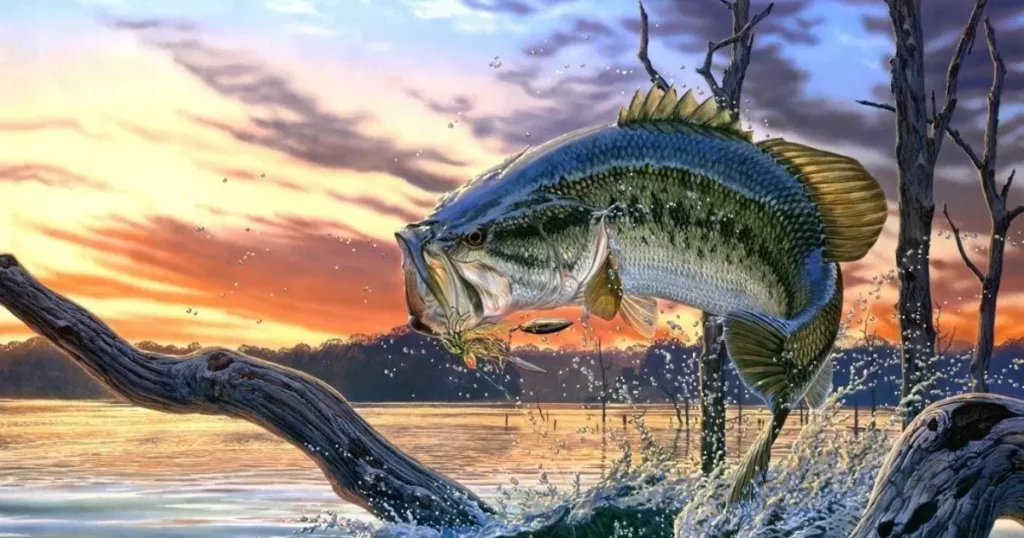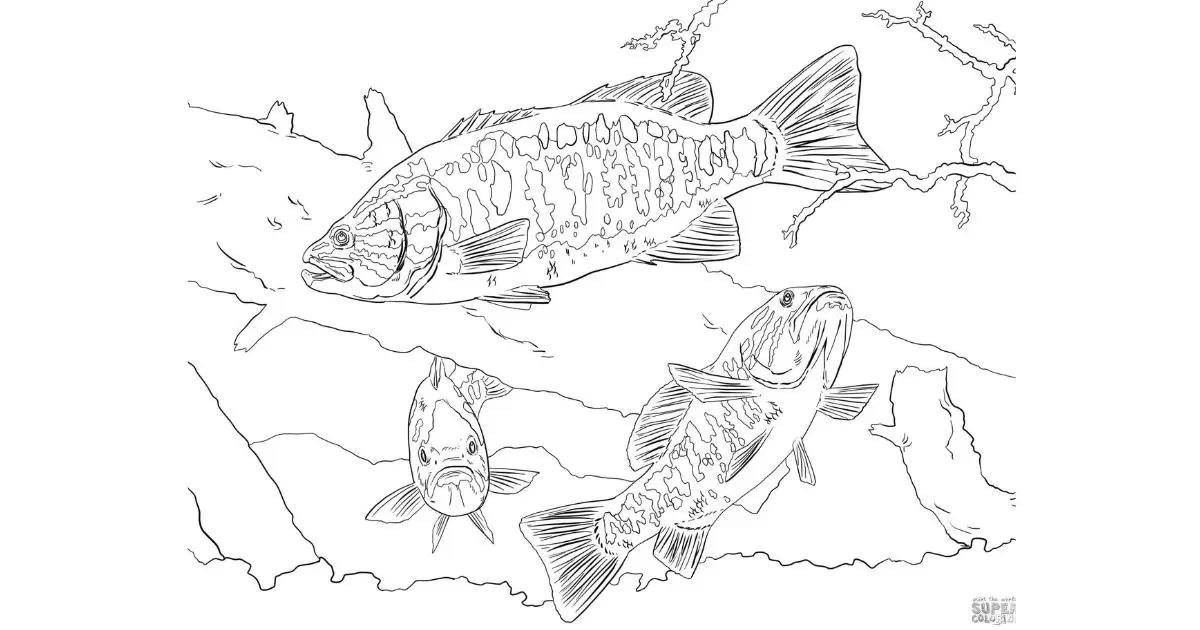Drawing a largemouth bass can be a rewarding and enjoyable experience for artists of all skill levels. Whether you’re a seasoned artist looking to capture the essence of this iconic fish or a beginner eager to try your hand at aquatic art, this step-by-step guide will help you create stunning drawings of largemouth bass. From understanding the anatomy to mastering shading techniques, we’ll cover it all.
Understanding Largemouth Bass Anatomy
Before diving into the drawing process, it’s crucial to have a basic understanding of the largemouth bass anatomy. This knowledge will help you capture the distinctive features of this fish accurately.
Head and Mouth
- Start with the Head: Begin your drawing by outlining the largemouth bass’s distinctive head shape. Pay attention to the location of the eyes and the gill cover.
- Define the Mouth: Largemouth bass are known for their large mouths. Sketch the wide, gaping mouth that extends beyond the eyes. Note the position of the lower jaw, which typically reaches past the back of the eye.
Body Structure
- Outline the Body: Largemouth bass have a robust and elongated body. Sketch the body shape, paying attention to the tapering towards the tail.
- Dorsal Fin: Draw the dorsal fin, which is spiny and situated along the back. It usually has a distinct notch between the spiny and soft parts.
- Tail Fin: Capture the shape of the tail fin. Largemouth bass have a deeply forked tail, which contributes to their impressive swimming abilities.
- Pectoral and Pelvic Fins: Add the pectoral and pelvic fins. These fins help the bass maintain balance and direction while swimming.
Step-by-Step Drawing Process
Now that you have a grasp of largemouth bass anatomy, let’s break down the drawing process into manageable steps.
Step 1: Basic Outline
Start with a light pencil sketch to outline the basic shape of the largemouth bass. Focus on getting the proportions right, paying close attention to the head, body, and tail.
Step 2: Detailing the Head
Refine the head by adding details such as the eyes, mouth, and gill cover. Largemouth bass have a distinct lateral line running along their bodies, so be sure to incorporate this feature.
Step 3: Body Contours
Work on defining the body contours, paying attention to the dorsal fin, tail fin, and the overall curvature of the fish. Add the pectoral and pelvic fins, ensuring they are proportionate to the body.
Step 4: Finishing Touches
Add the finer details, such as scales, to give your largemouth bass a realistic texture. Take your time with this step, as small details can make a significant difference in the overall appearance of your drawing.
Mastering Shading Techniques
Shading is crucial to bring your largemouth and smallmouth bass drawing to life. Follow these tips to master shading techniques.
1. Study Light and Shadow:
- Natural Light Source: Identify the direction of light in your drawing. This will determine where shadows fall and highlights appear.
- Gradual Shading: Use a gradual shading technique to create smooth transitions between light and shadowed areas.
2. Texture and Scales:
- Scales: Pay attention to the direction of scales on the largemouth bass. Use short, overlapping strokes to mimic the texture of scales.
- Highlights: Add highlights to the scales to create a sense of dimension. Focus on the areas where light hits the fish’s body.
3. Water Reflection:
- Subtle Reflections: If your largemouth bass is in a water environment, add subtle reflections to indicate the play of light on the water’s surface.
- Ripples: Consider incorporating gentle ripples around the fish to enhance the aquatic atmosphere.
Tips for a Realistic Largemouth Bass Drawing

- Reference Images: Use reference images of actual largemouth bass to ensure accuracy in your drawing. Study different angles and positions to capture the fish’s dynamic nature.
- Practice Proportions: Pay attention to the proportions of the head, body, and fins. Practice drawing these elements separately before attempting a complete largemouth bass.
- Experiment with Posing: Largemouth bass can be portrayed in various poses, from a relaxed swim to an aggressive strike. Experiment with different poses to add personality to your drawing.
- Color Considerations: If you choose to add color to your drawing, research the typical coloration of largemouth bass. They often have a greenish hue with dark lateral stripes.
Frequently Asked Questions
How do I capture the essence of a largemouth bass’s distinctive head in my drawing?
Begin by outlining the head shape, emphasizing the large, gaping mouth that extends beyond the eyes, and pay attention to the placement of the gill cover.
What’s the key to conveying the robust body structure of a largemouth bass?
Capture the elegance of the largemouth bass’s form by sketching its elongated body, emphasizing the tapering towards the tail, and highlighting the spiny dorsal fin.
How can I add realism to my largemouth bass drawing through shading?
Master shading techniques by understanding light dynamics, using gradual shading for smooth transitions, and incorporating texture, such as scales, with strategic highlights.
What role do water reflections play in enhancing the authenticity of a largemouth bass drawing?
Introduce subtle reflections to capture the play of light on the water’s surface, and consider adding gentle ripples around the bass for a more dynamic aquatic atmosphere.
How can I infuse personality into my largemouth bass drawing?
Experiment with different poses, from a relaxed swim to an aggressive strike, and pay attention to the nuances of expression to bring the largemouth bass to life on your canvas.
Conclusion
Drawing largemouth bass can be a gratifying experience, allowing you to showcase both your artistic skills and appreciation for aquatic beauty. By understanding the anatomy, following a step-by-step process, and mastering shading techniques, you can create realistic and visually stunning renditions of this iconic fish. So, grab your pencils and paper, and dive into the world of largemouth bass artistry.

